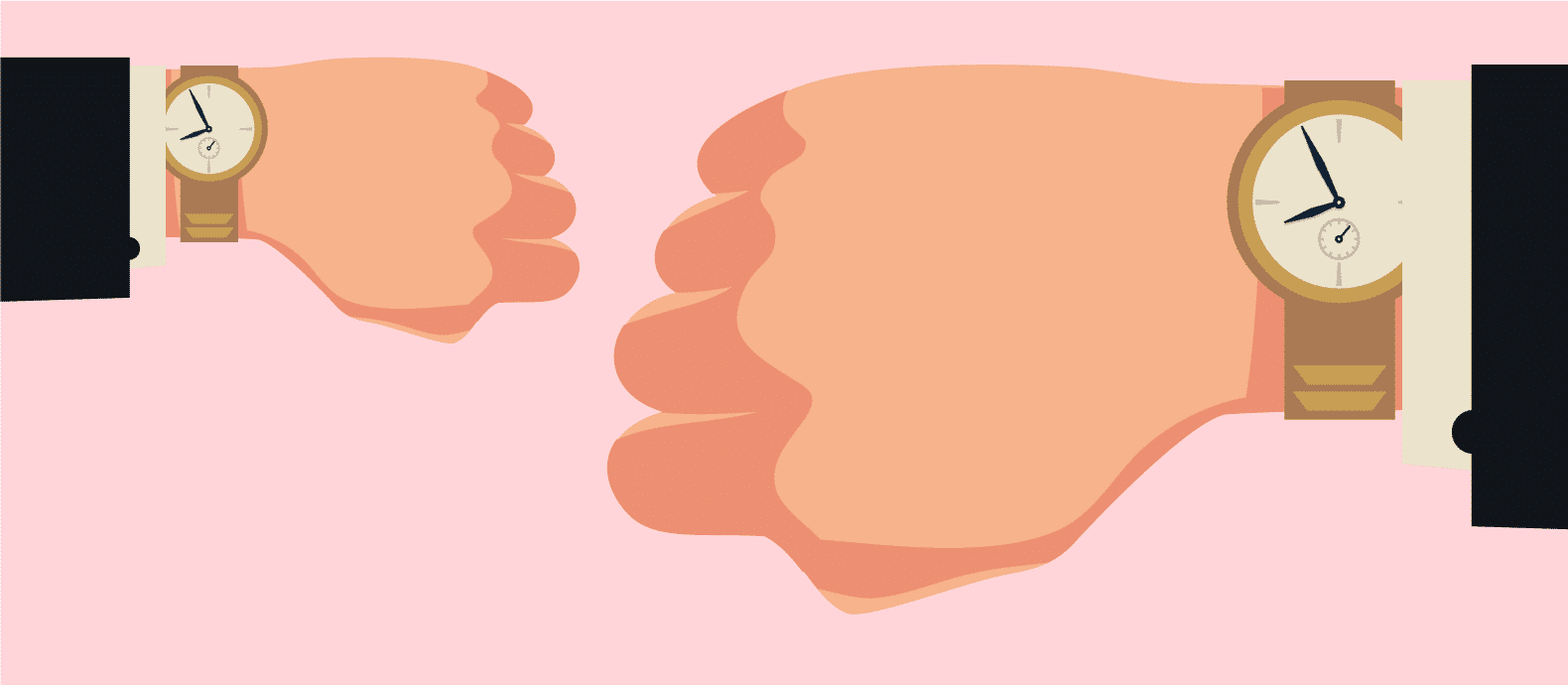
Table of Contents:
Last updated on: June 8, 2022
For a watch collector, there are few things that compare to the thrills of purchasing a genuine luxury timepiece. An expensive watch still translates into social status and wealth for many consumers. It can even give its owner a sense of success: they’ve finally got the watch, they’ve made it.
Now imagine the frustration, when finding out the watch they’ve always wanted is in actual fact a knockoff. A very good imitation. No misspelled logo, no tell-tale signs, until getting it checked by an expert. The frustration felt by an aspiring watch collector of getting duped by Canal Street-type online crooks is unforgettable. Usually resulting in a complete loss of trust in the watch brand that was originally chosen.
Of course, we can’t assume that all purchases of fake watches are done so by mistake. In our latest survey on the fake watch industry, 65% of consumers that had bought a fake watch knowingly and were satisfied with the product.
Summary:
Consumers are granted the opportunity to buy just about anything online. A simple search for an item results in a multitude of options. The results amount to a mix of original products alongside rogue websites and sellers on marketplaces that lure unsuspecting buyers into buying counterfeits.
There is a huge market for counterfeiters, as many buyers of replica watches intentionally look for them. This amounts to 15-30% of searches relating to watches which are directly aimed at looking for replica watches.
The Haute Horlogerie estimates that approximately 40 million fake Swiss watches go on sale each year. A figure that is hard to stomach for watchmakers, when you realize it’s more than what authentic Swiss-made watches are being produced; Only 30 million originals are created each year.
In terms of sales lost to fake watches, this figure is estimated to be at approximately USD 618 million of the original manufacturer’s retail selling price, which represented 44% of the total MRSP value lost to counterfeits in 2017. Brands are losing out on a big chunk of their potential income and more importantly, consumers lose trust in their brand, which is the biggest long-term issue they’re currently facing.
The main reason for the continuous rise in popularity of fake watches is the quality of fakes that are found today. Here below are pictures of both fake and authentic watches. Can you spot the fake designer watches?
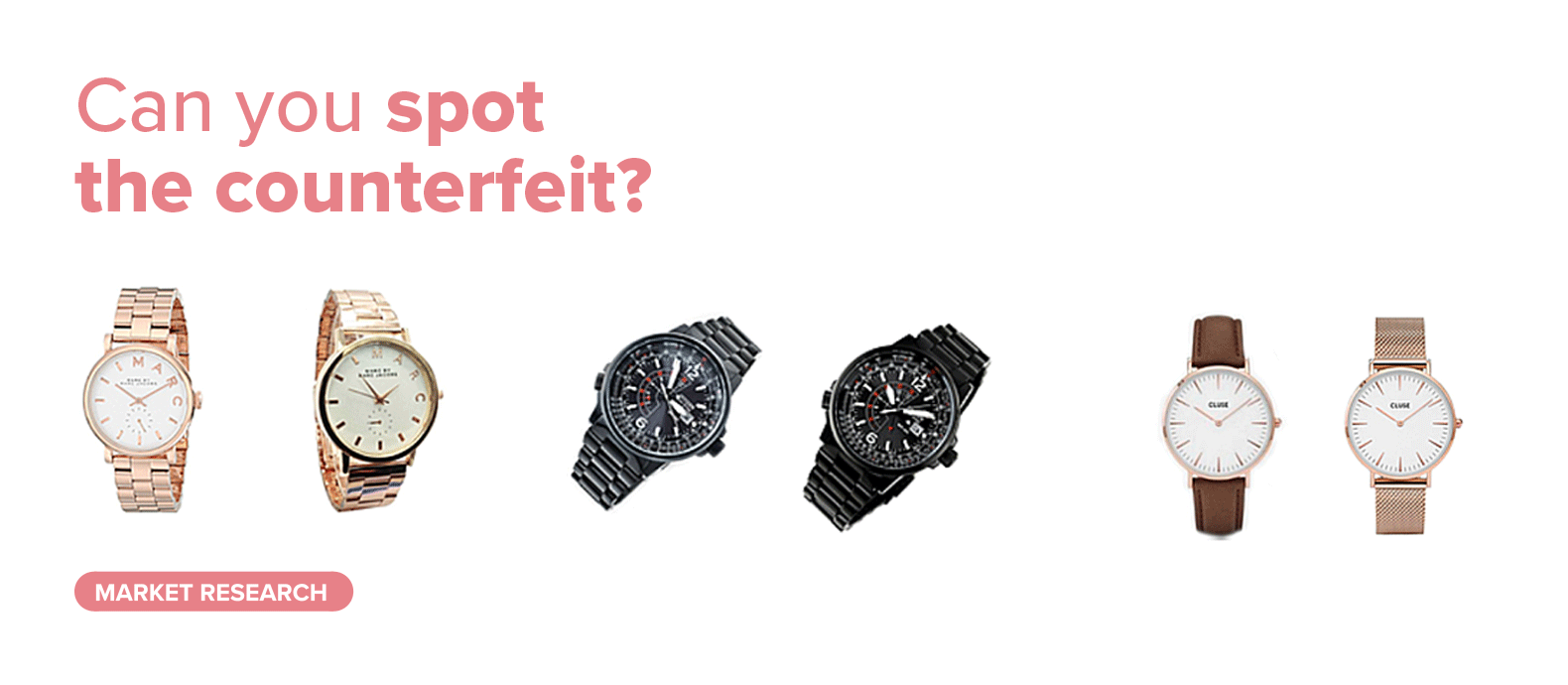
You are right if you identified 2, 4 and 5 as the fakes. But as you can see, the differences are minimal. We’re now dealing with Superfakes. The differences are in minute details and finishing touches.
Even if the pictures used by counterfeit sellers are their own, there’s still a high chance that buyers looking for the original watches will confuse these superfakes for the authentic version, only to find out it’s a replica watch if it is checked by an expert. With 3D printing, the finishing touches that were previously impossible to copy are now achieved by counterfeiters. The new manufacturing possibilities pose a real threat for authentic watch brands.
Another factor that sellers of fake watches have been improving on is how they are viewed online. Online payment methods and direct messages are now commonplace when buying fake items. The listing on a given marketplace is created to look just as professional as the brand’s own. Blackhat SEO also ensures their listing is kept in a high search position, which makes it all too easy for consumers to tricked into buying a replica watch.
They now mimic brands’ own websites and style, to confuse buyers into thinking they’re a trusted, secure platform. As a general rule of thumb, counterfeiters are using the same images stolen from the brand’s original page. And unfortunately, 43.5% of survey respondents said they evaluate the trustworthiness of a product of seller by the quality of photos the seller is using.
The watch industry has many versions of fakes to choose from. Frankenwatches are essentially vintage watches with components from other watches, sold as the original watch. Once again, it’s cheaper than the original vintage watch and the same tactics are used to trick vintage watch collectors into choosing them.
There are also watches sold on the gray market, which also poses a big problem for brands, as – unlike fake watches – gray market watches are legal.
In our latest market research report on fake watches, it was found that the top priority for online watch shoppers was style, with 22.2% of the majority. This could explain the reason why so many consumers are intentionally shopping for fake watches. If appearance overrides quality in terms of priorities, it’s an easy win for counterfeiters. Affordability was the third biggest priority for watch shoppers, which is another strong reason why fakes are chosen over authentic watches. Consumers that compare prices see the same product, whether it be on the brand’s own webpage or a seller on a marketplace, as the pictures are taken from the brand itself.
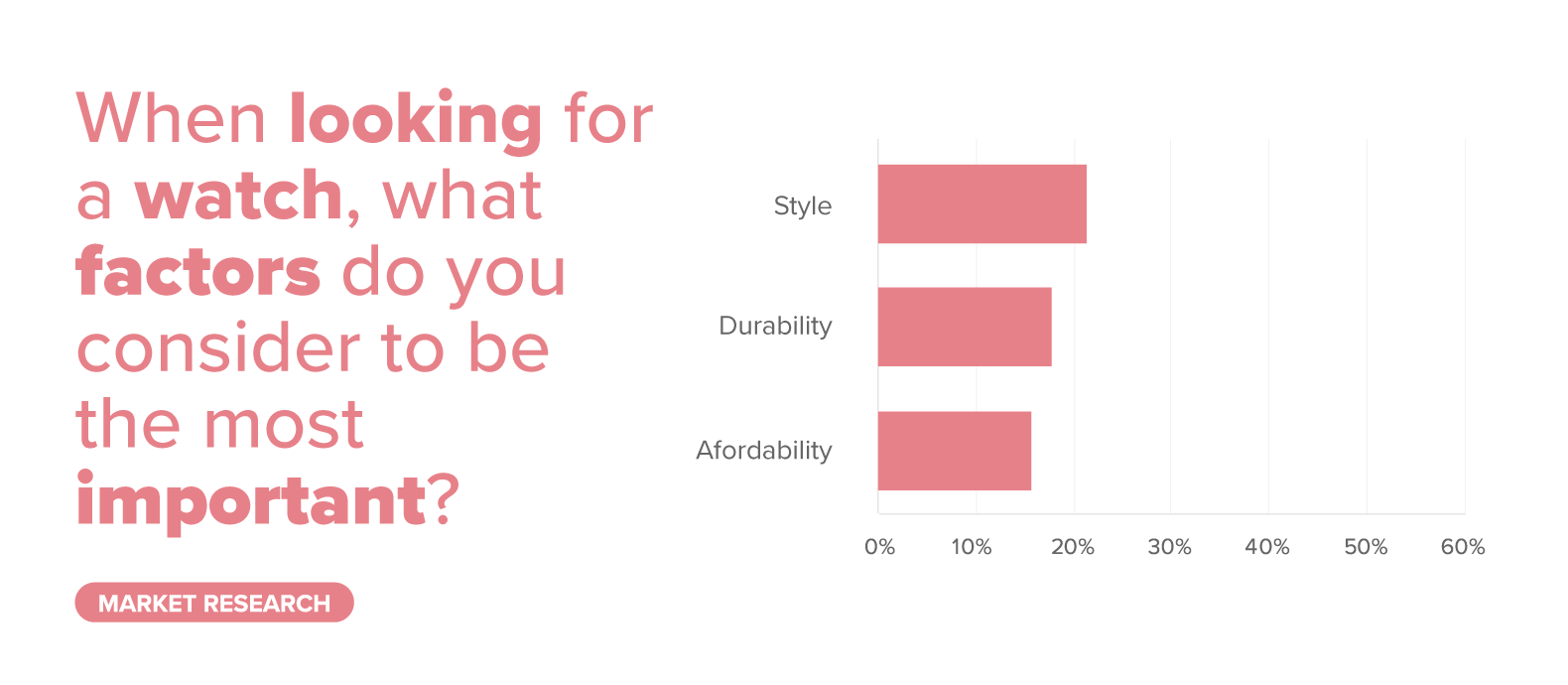
The obsession for watches today is largely linked to style and stature. We’ve never had so many devices telling the time, it’s clear that their use of telling the time isn’t the priority for most. It’s a fashion accessory, and there are many articles and videos online that will give you tips on which watch to choose, in relation to your budget and what you wish to denote with your choice. This makes it a top contender for counterfeiters.
Perhaps the most worrying figure that was found in our market research was how much consumers trusted social media to purchase watches. 73% of respondents would purchase a watch via a social media post. The fact is that fake watch sellers are avid users of social media to source their customer base. With groups and profiles, counterfeiters create profiles using brands’ own content to promote their fake watches. Up to 30% of our respondents said they would use social media to search for a watch online. With the option to buy directly via social media, or simply posting their instant messaging contact details, transactions are made swiftly and a fake watch is delivered to their doorstep.
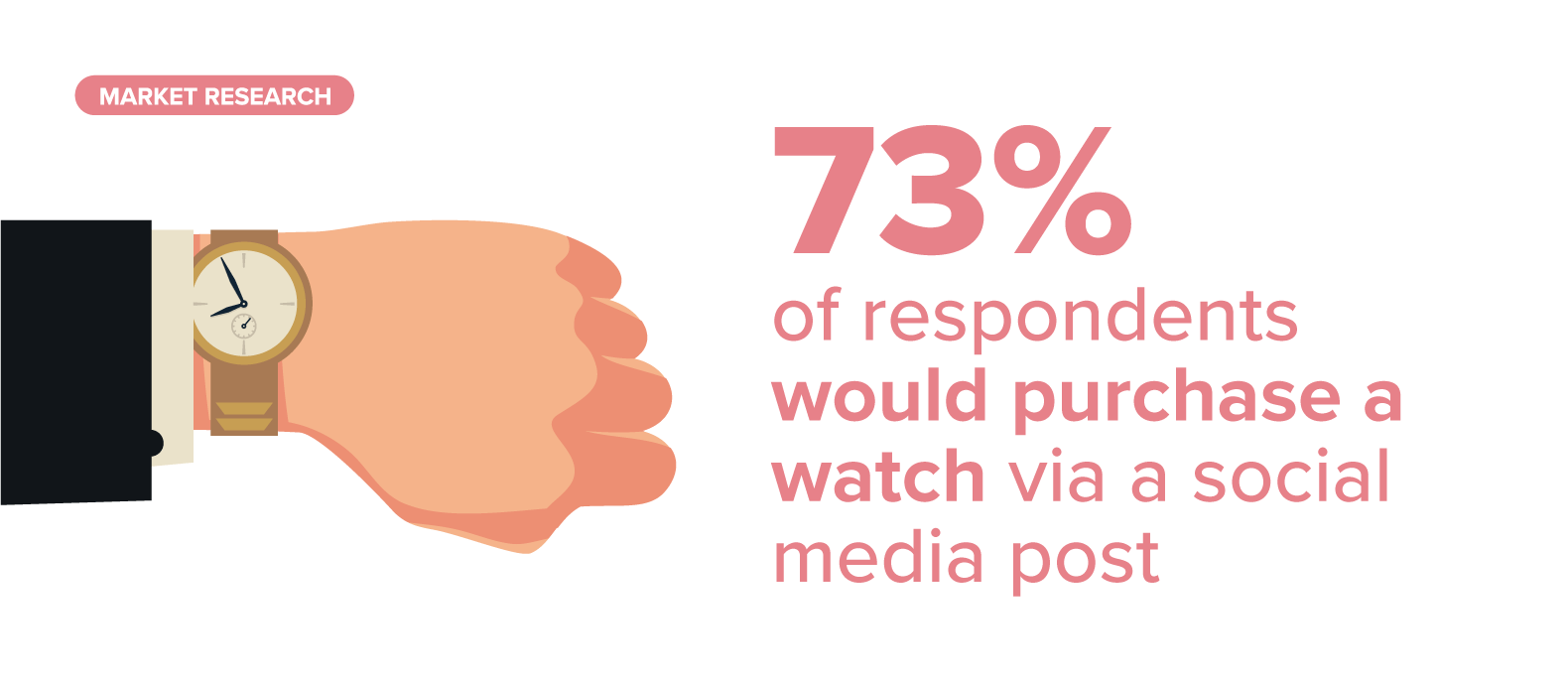
Social media makes these shady dealers look more accessible. They’re also able to update their customers with new products they sell, update prices and answer their queries directly.
Reddit, a user-generated platform is also in the fake watches loop. The subreddit /r/RepTime has 70.4K members to date. It is filled with tips on where to purchase the best 1:1 (perfect fake) online, “wristrolls” of users’ fake watch purchases and more. All the details of how to spot a fake are regularly outlined, along with the improvements on these. It’s a watch brand’s worst nightmare, but it is also a great way for these to have a clear outline of what is out there to counteract the growth of their watches on the replica market.

Consumers don’t go to fakes for quality, they buy a fake watch for affordable style. It’s instant gratification, even if it means that the product will last them a few months if they’re lucky. The price is key in their purchase; as 30% of survey respondents said they would pay between 50-75% of the official RRP for a fake watch. It’s quite simply faking a social status that they would have perhaps never attained otherwise. Our market research found that as much as 65% of participants who had bought a fake were satisfied with the product to some extent.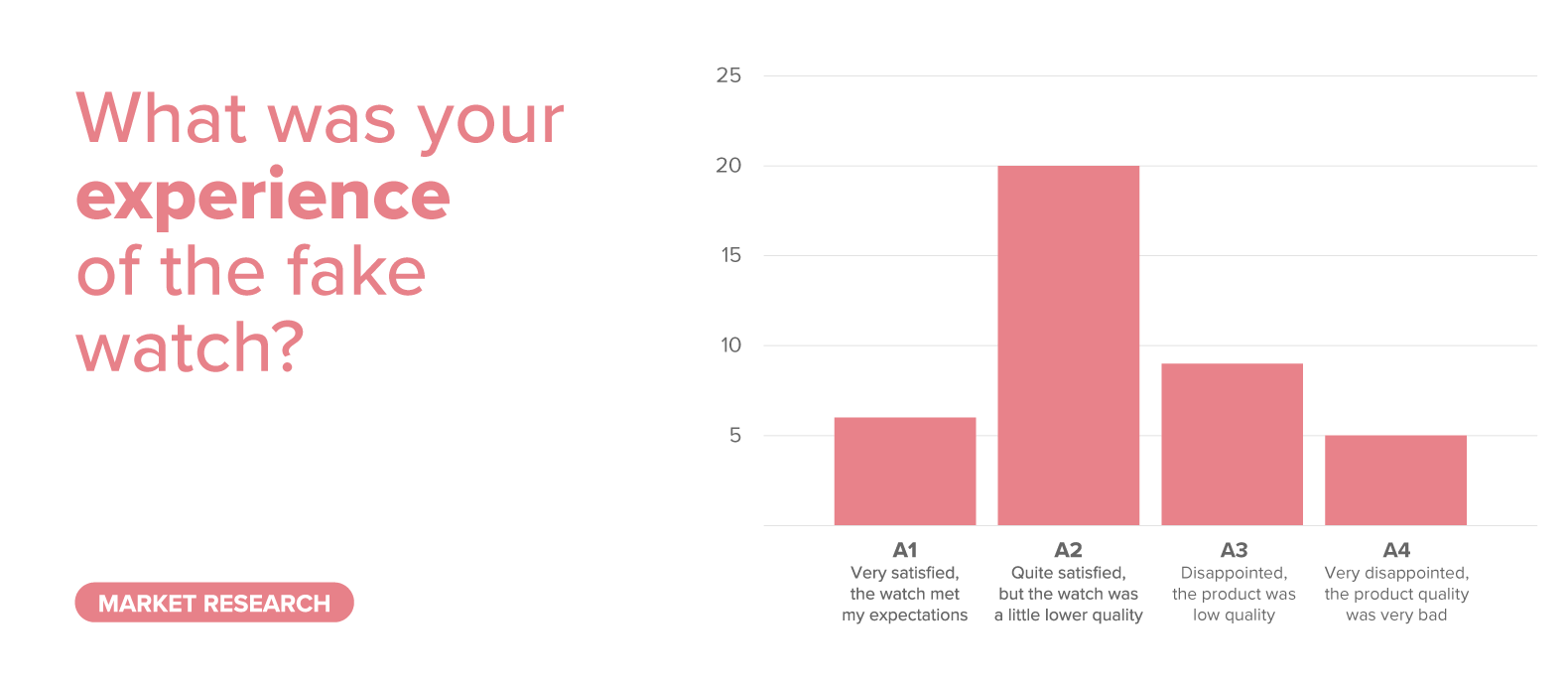
This greatly devalues brands in the eyes of consumers. The prestige associated with owning an authentic Swiss-made luxury watch is lost. It has been replaced with distrust and fear of getting fooled by fake dealers for those that are ready to purchase an authentic watch. Searching for a high-end watch online is not a safe option for consumers today, unless they’re ready to analyze reviews, use the brand’s own website or carefully analyze the sellers and become extremely meticulous in their search.
Surprisingly, we found that survey respondents were worried about fake watches online. They seemed to be problem-aware of the fact that it can send small brands starting out into bankruptcy, and for bigger brands to lose their credibility when a consumer is disappointed with the fake watch received. 60% of participants are concerned about fake watches online, which shows that there is awareness of the issue and knowledge of the dark side of this industry. It is up to luxury watch brands to protect their intellectual property with both a strong legal and tech strategy to avoid this trend from growing.
Brands are the ones in the deciding seat. Although it may feel like it’s hard to keep control over the spreading of the fake watches wildfire, the solution lies in taking action with a tech-based strategy. 42% of survey respondents think it is the brands’ responsibility to remove fake items from online platforms, which leads to consumers losing trust in brands that don’t take action against counterfeiters. The first step for brands is to ensure all intellectual property laws that are relevant to their brand is put in place.
It is now common knowledge that the counterfeit industry is linked with terrorist organizations, with workers often underage, working in appalling conditions, as well as using dangerous chemicals in their products that harm consumers’ health. This not only results in loss of trust in a brand, it also deteriorates their brand image, if they are not actively and publically trying to fight the counterfeit industry from gaining more ground.
